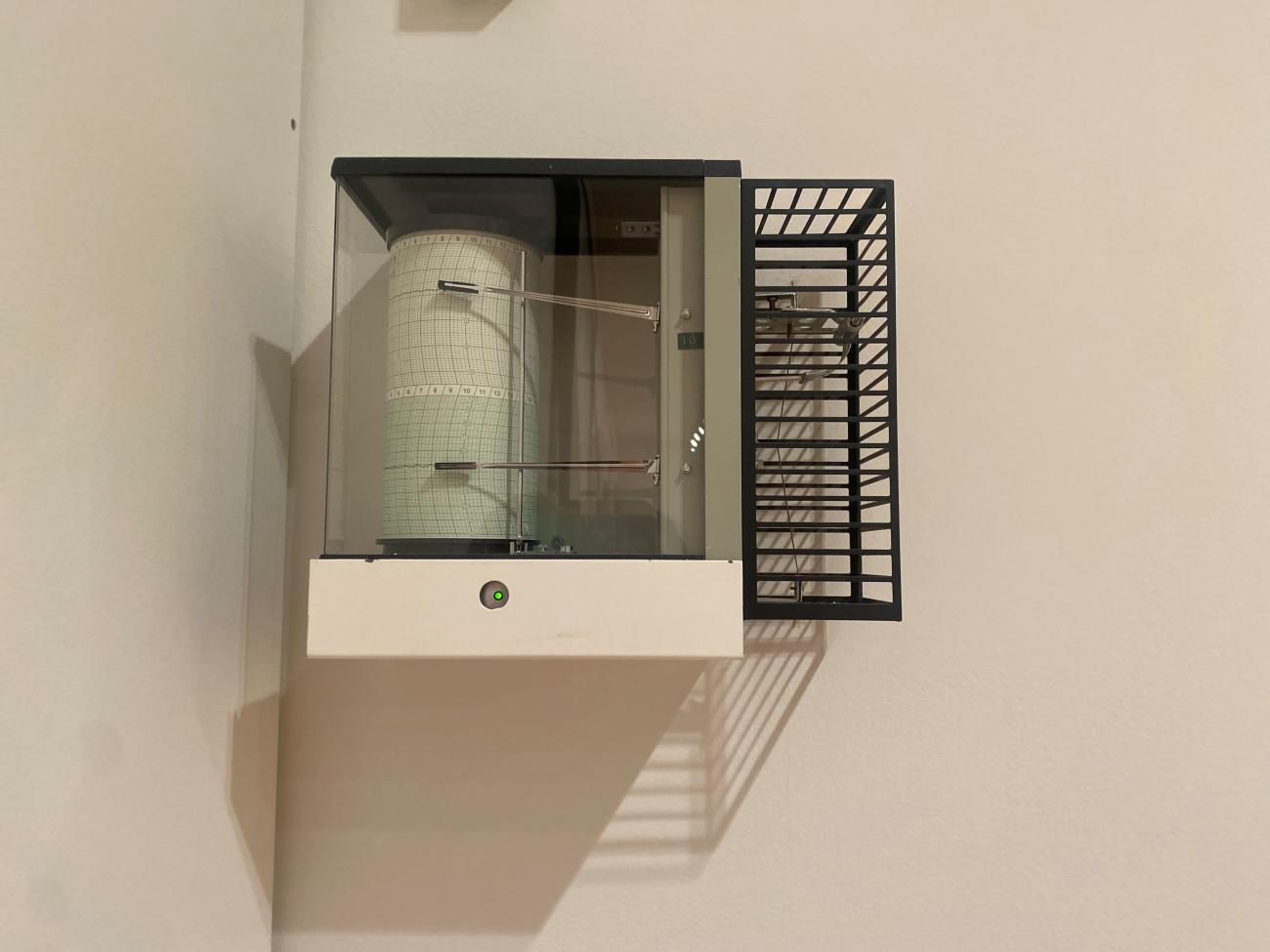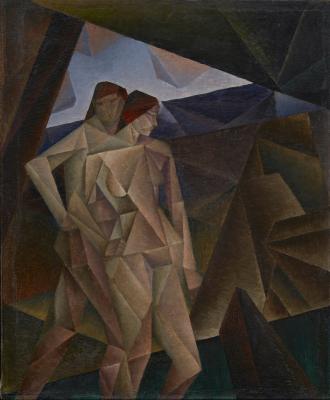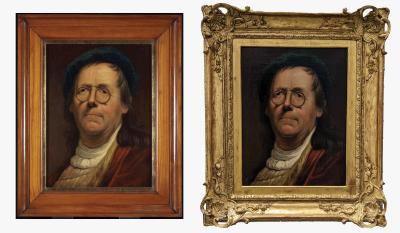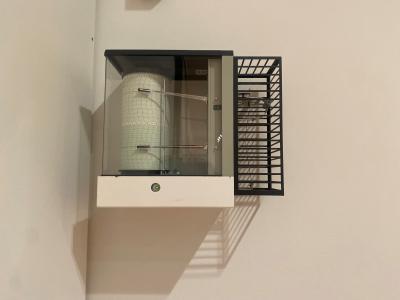Conservation Notes: Get to Know a Hygrothermograph
Learn how the AGO protects art from humidity

A hygrothermograph as seen installed in the Betty Ann & Fraser Elliott Gallery (135) on Level 1 of the Art Gallery of Ontario. So named for its many functions: Hygro (from the Greek hugros, meaning "moisture/humidity") + thermo (a Greek root meaning "heat") + graph (from the Greek root grapho, meaning "write"). Image courtesy the AGO.
Beating the heat isn’t just a perk of being in a museum or gallery; for conservation professionals, it’s part of the job. To protect the art within the AGO's walls, the Gallery is intentionally kept cool and relatively dry.
How does the team do it? With a bevy of tools, including a small, helpful device, invented in the late 18th century, that allows staff to keep a close eye on conditions in the Gallery's art spaces.
Foyer chatted with experts from the AGO's Michael and Sonja Koerner Centre for Conservation, to learn more about the hygrothermograph.
Foyer: What is a hygrothermograph?
A hygrothermograph is an instrument that measures and records both temperature and relative humidity (RH), simultaneously, onto a single chart. They work in tandem with digital data loggers to record environmental conditions in art spaces — whether display or storage environments.
Hygrothermographs are particularly valued for producing an immediately visible record that allows us to assess the pattern of temperature and humidity changes that occur in a space over a period of time.
At the AGO, these charts are monitored by Conservation and patrolling Protection Services Officers for changes which allows us to respond very quickly to new conditions. Trends in any given gallery space usually follow a consistent pattern, making it very simple and quick to identify unusual changes.
How does the hygrothermograph work?
Temperature is recorded by the upper pen, which is controlled by the movement of a bimetallic strip. The humidity-sensing element is comprised of small bundles of human hair. The hair lengthens or shortens depending on the humidity of the surrounding air. This motion is transferred to the lower pen by means of a lever mechanism. The chart is installed on a drum which is rotated by a battery-powered clockwork mechanism. The mechanism has three output speeds, so that one-day, seven-day, and 31-day charts can all be accommodated on one instrument.
Is relative humidity the same as the humidex?
Nope. Relative humidity (RH) is a measure of the actual amount of moisture in the air compared to the total amount of moisture that can exist in the air at its current temperature. It’s expressed as a percentage. For example, a relative humidity of 40 percent means the air is at 40 percent of its water-holding capacity for the present temperature. Warm air can hold more moisture than cold air, so temperature is an important factor.
The humidex by contrast combines temperature and humidity to describe how hot it feels outside to the average person. It was invented in Canada!
What’s so bad about humidity?
Too much, too little, too many fluctuations – all lead to direct damage to objects and materials. Relative humidity above 75% supports mold growth, which stains and weakens both organic and inorganic materials. Humidities above 65% are at a higher risk for a variety of pest attacks. High humidity also causes corrosion of metals. High humidities can also cause the shrinkage of tightly woven textiles — as sometimes occurs in 19th-century canvases. Low humidity may cause wood and ivory to crack, and drum skins to split.
Why do you control the temperature?
For mixed fine-art collections, any temperature between 16°C and 25°C is considered acceptable. At the lower limit, acrylic paint films become brittle, but otherwise the cooler the ambient environment is kept, the slower the inevitable chemical reactions that are associated with the aging of materials.
Who decides the ideal temperature for artworks?
Until recently, museums and galleries chose very strict set points for temperature and humidity at great cost to the environment. Those guidelines have since been reconsidered, in the wake of conversations about sustainability and the AGO has been a leader in adopting the Bizot Green Protocol for environmental standards on collection care. With the aim to help curb the environmental impacts of climate controls in museums, the AGO has widened the range of temperature and humidity in collections while still avoiding the danger points. This means that our mechanical systems don’t have to work quite so hard to maintain more seasonal set points like 56% RH in July or 42% RH in February, using less energy while keeping the art in our care safe.
Now that you know what it does, join us in saluting the humble hygrothermograph for playing its role in a larger system of checks and balances. There are more than a few paintings, drawings, prints and other artworks that would likely say "thank you" too. Hygrothermographs are currently visible throughout the museum, including in the Reuben Wells Leonard Memorial Gallery (117), the E. R. Wood Gallery (121), and the Marvin Gelber Gallery (113).




